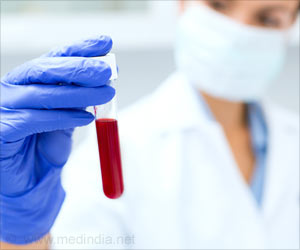New research suggests that relapse of cervical cancer can be prevented by delivering radiotherapy directly to cancer of the cervix using 3-D imaging techniques.

Dr Renaud Mazeron said that a review of the use of 3-D image guided adaptive brachytherapy (IGABT) after a course of chemotherapy and radiotherapy given together (concomitant chemoradiation) in 163 patients treated between 2004-2009 at the Institut Gustave Roussy in Villejuif, France, had shown that it achieved results that were far superior to those from previous eras using different treatments. Not only was IGABT effective at controlling the tumour, but it also had more acceptable side-effects.
At present, there is no conclusive evidence as to whether or not women with cervical cancer, especially if it is at an advanced stage (stage IB-IIB) [3], should have their wombs removed to help to avoid the cancer returning or spreading. This study suggests that hysterectomies may be unnecessary for most women, unless the cancer has obviously returned and invaded the womb.
Dr Mazeron, who is an assistant professor in the radiation oncology department of the Institut Gustave Roussy, said: "IGABT is a three dimensional technique of brachytherapy allowing a much better adaptation of treatment to the target area, while preserving healthy organs at risk from radiation. Our department has been one of the pioneers of this technique and we already have accumulated significant experience. Our current study does not formally show that surgery is unnecessary, since we did not conduct a randomised comparison, but it shows that IGABT combined with chemoradiation achieves results far superior to the historical data, with high rates of control at the site of the primary tumour.
"In our institute, surgeons have been convinced to abandon systematic surgery by the advances in concomitant chemoradiation and IGABT, and the conjunction of both. Historical data based on classical techniques, which gave external radiation without chemotherapy and X ray-based brachytherapy which did not allow to adapt the treatment to each case, show that local control of a stage I tumour was usually around 90%, between 60 to 87% for stage II, 44 to 66% for stage III and 18-48% for stage IVA. In this study, we report a rate of 92% in a large group of patients with tumours at any stage."
Of the 163 patients in the study, 27% had stage I cervical cancer, 57% stage II, 12% stage III, and 3% stage IV. They received concomitant chemoradiation, followed by brachytherapy that was guided to the correct spot by either magnetic resonance imaging (MRI) in 88% of cases, or computerised tomography (CT) in 12% of cases.
Advertisement
After an average follow-up of 36 months, 45 patients had relapsed, including one woman who had had a hysterectomy, and of whom 70.4% had distant metastases. "This clearly shows that distant metastases are the primary cause of relapse," said Dr Mazeron.
Advertisement
He said that IGABT was an emerging technology and the results from this study should be confirmed by two international studies, one of which will be presented at the parallel ESTRO 31 conference in Barcelona [4].
"IGABT is the future of brachytherapy in cervical cancer. Potential financial investments should not discourage radiation oncologists. It costs less than Intensity-Modulated Radiation Therapy, a technique of external beam radiotherapy that has become a standard in the treatment of some cancers. We must keep in mind that cervical cancer is a public health problem in developing countries where it is the second most common cancer in women following breast cancer. IGABT represents a significant improvement in results, and some centres are already practicing this technique in India and Southeast Asia," he concluded.
Dr Christine Haie-Meder, radiation oncologist at the Institut Gustave Roussy and chairperson of the World Congress of Brachytherapy, commented: "Image-guided adaptive brachytherapy has recently been implemented in cervix cancer patients. Results are in favour of a significant improvement in local control. The present series also contribute to show improvement in local control with IGABT. Within this context, complementary surgery does not bring any further contribution to local control improvement, and hysterectomy may even increase the risk of complications."
Source-Eurekalert














